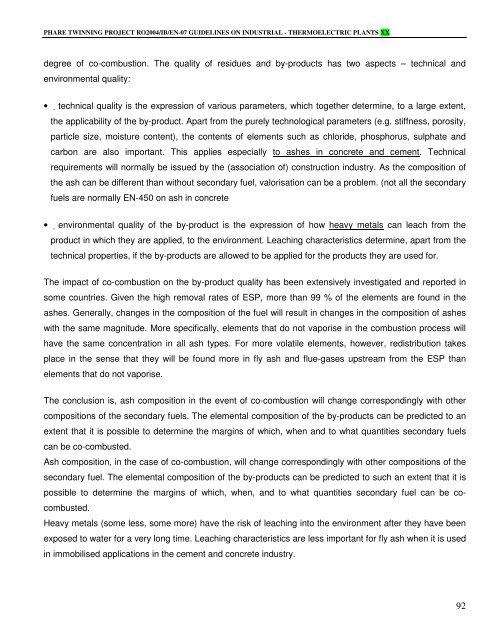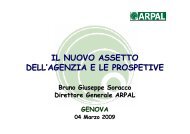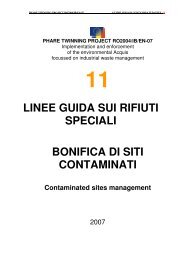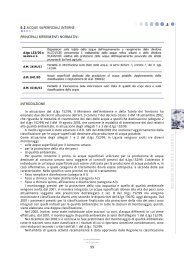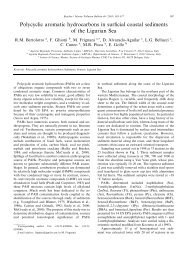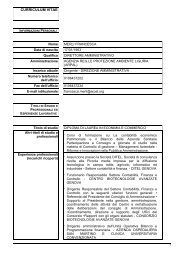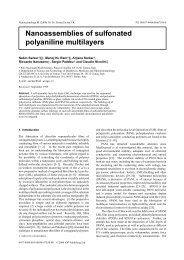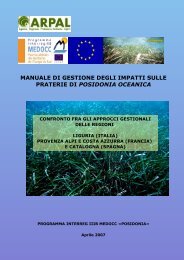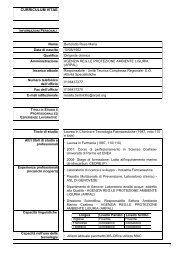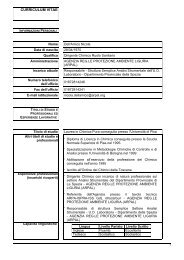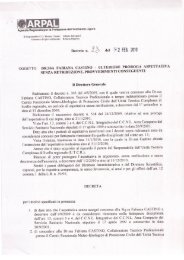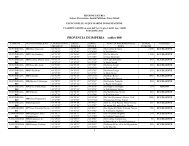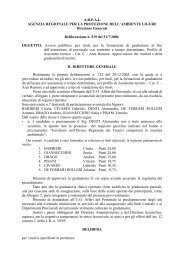Rifiuti da centrali termoelettriche - ARPAL
Rifiuti da centrali termoelettriche - ARPAL
Rifiuti da centrali termoelettriche - ARPAL
You also want an ePaper? Increase the reach of your titles
YUMPU automatically turns print PDFs into web optimized ePapers that Google loves.
PHARE TWINNING PROJECT RO2004/IB/EN-07 GUIDELINES ON INDUSTRIAL - THERMOELECTRIC PLANTS XX<br />
degree of co-combustion. The quality of residues and by-products has two aspects – technical and<br />
environmental quality:<br />
• technical quality is the expression of various parameters, which together determine, to a large extent,<br />
the applicability of the by-product. Apart from the purely technological parameters (e.g. stiffness, porosity,<br />
particle size, moisture content), the contents of elements such as chloride, phosphorus, sulphate and<br />
carbon are also important. This applies especially to ashes in concrete and cement. Technical<br />
requirements will normally be issued by the (association of) construction industry. As the composition of<br />
the ash can be different than without secon<strong>da</strong>ry fuel, valorisation can be a problem. (not all the secon<strong>da</strong>ry<br />
fuels are normally EN-450 on ash in concrete<br />
• environmental quality of the by-product is the expression of how heavy metals can leach from the<br />
product in which they are applied, to the environment. Leaching characteristics determine, apart from the<br />
technical properties, if the by-products are allowed to be applied for the products they are used for.<br />
The impact of co-combustion on the by-product quality has been extensively investigated and reported in<br />
some countries. Given the high removal rates of ESP, more than 99 % of the elements are found in the<br />
ashes. Generally, changes in the composition of the fuel will result in changes in the composition of ashes<br />
with the same magnitude. More specifically, elements that do not vaporise in the combustion process will<br />
have the same concentration in all ash types. For more volatile elements, however, redistribution takes<br />
place in the sense that they will be found more in fly ash and flue-gases upstream from the ESP than<br />
elements that do not vaporise.<br />
The conclusion is, ash composition in the event of co-combustion will change correspondingly with other<br />
compositions of the secon<strong>da</strong>ry fuels. The elemental composition of the by-products can be predicted to an<br />
extent that it is possible to determine the margins of which, when and to what quantities secon<strong>da</strong>ry fuels<br />
can be co-combusted.<br />
Ash composition, in the case of co-combustion, will change correspondingly with other compositions of the<br />
secon<strong>da</strong>ry fuel. The elemental composition of the by-products can be predicted to such an extent that it is<br />
possible to determine the margins of which, when, and to what quantities secon<strong>da</strong>ry fuel can be cocombusted.<br />
Heavy metals (some less, some more) have the risk of leaching into the environment after they have been<br />
exposed to water for a very long time. Leaching characteristics are less important for fly ash when it is used<br />
in immobilised applications in the cement and concrete industry.<br />
92


